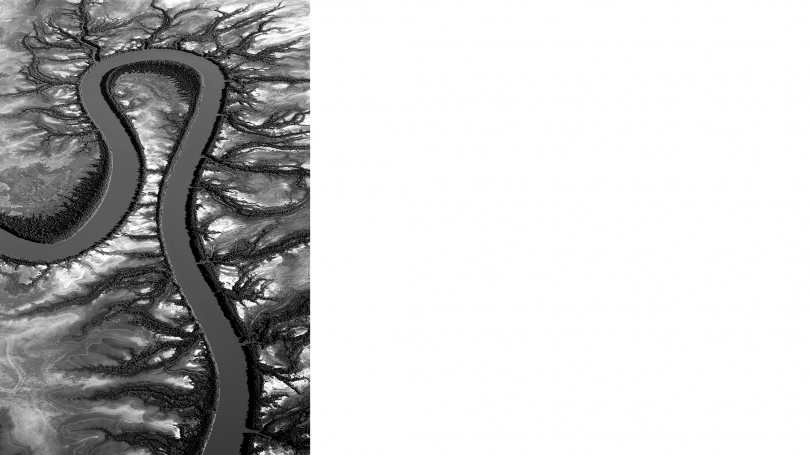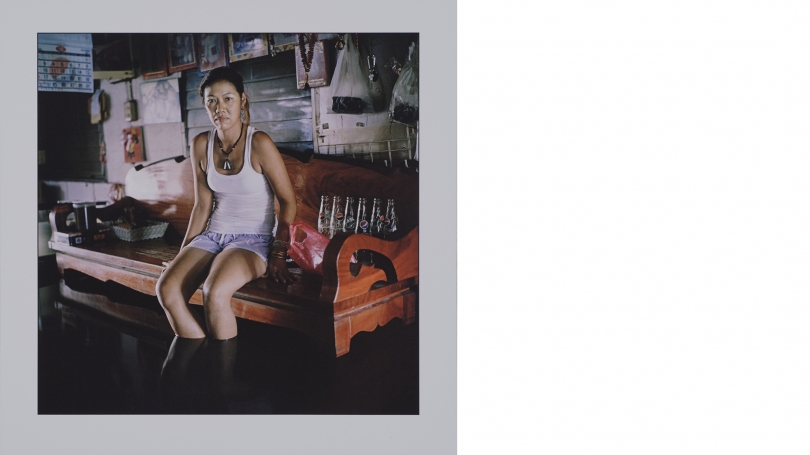Water is ubiquitous in our lives. We use it for drinking, cooking, cleaning, and recreation. It affects where we choose to live and is integral to many people's work. This exhibition explores water's impact on human life and humanity's impact on water.
Drawn primarily from the Hood's permanent collection, the exhibition comprises over two dozen works from across the globe. The majority are 20th– and 21st–century photographs demonstrating a range of approaches to landscape and portraiture. David Goldes's Water Balance (1994) shows a small dish of water filled to the brim. Pins ring the edge, like numbers on a clock, balancing on the top of the water and demonstrating the concept of surface tension. This interest in close scientific observation is also evident in Harold Edgerton's Water from a Faucet (1932). Edgerton used a strobe light to freeze a stream of water in a moment of time—allowing us to view an everyday occurrence in a new way. This perspectival shift also occurs in Australian photographer Peter Eve's dramatic aerial view of a bend in the River Wandjina.
The intersection of water and environmental issues is an underlying theme throughout the show, as seen in a photograph by James Balog of a melting glacier, as well as one by Edward Burtynsky of the oil spill in the Gulf of Mexico in 2011. Ian Teh's work documents pollution in China with a photograph of the Kuye River, while Emmet Gowin's explores nuclear power in the United States with a photograph of the Columbia River and Hanford Nuclear Reservation in Washington State. Water and humanity intersect most dramatically when there is either too much or too little of the former. In the exhibition, a photograph of the Dust Bowl taken by Margaret Bourke-White in 1953 for LIFE magazine is paired with an image of a dried-up river in Brazil taken by Daniel Beltra in 2005 as part of his Amazon Drought series. In contrast, Gideon Mendel takes compelling portraits of people in front of their flooded homes. Mendel's series Drowning World is global, reaching from Nigeria and Thailand to Germany and Pakistan.
This exhibition, which also includes Roman and Egyptian depictions of the Nile from the first century BCE and the sixth century CE, is organized in conjunction with the Nile Project, in residence at the Hopkins Center from April 13 through 18. This group of musicians, educators, and activists collaboratively addresses environmental and cultural issues in the Nile basin. The Nile Project will perform at 8 p.m. on Friday, April 17, in the Hopkins Center (tickets available through the Hop Box Office).
Water Ways was organized by the Hood Museum of Art and made possible by the Harrington Gallery Fund.

